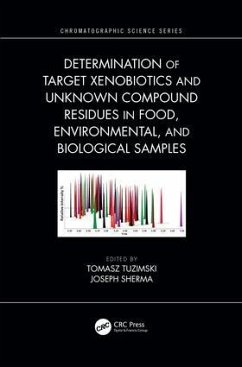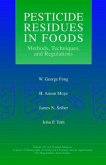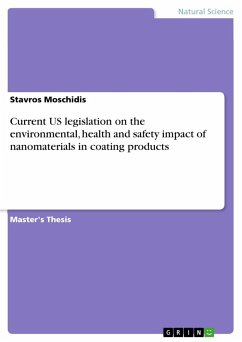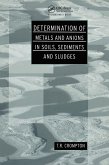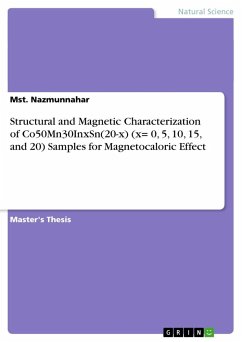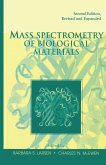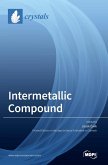Determination of Target Xenobiotics and Unknown Compound Residues in Food, Environmental, and Biological Samples
Herausgeber: Tuzimski, Tomasz; Sherma, Joseph
Determination of Target Xenobiotics and Unknown Compound Residues in Food, Environmental, and Biological Samples
Herausgeber: Tuzimski, Tomasz; Sherma, Joseph
- Gebundenes Buch
- Merkliste
- Auf die Merkliste
- Bewerten Bewerten
- Teilen
- Produkt teilen
- Produkterinnerung
- Produkterinnerung
Xenobiotics are chemical compounds foreign to a given biological system. This reference will help the analyst develop effective and validated analytical strategies for the analysis of hundreds of different xenobiotics on hundreds of different sample types, quickly, accurately and at acceptable cost.
Andere Kunden interessierten sich auch für
![Pesticide Residues in Foods Pesticide Residues in Foods]() W. George FongPesticide Residues in Foods224,99 €
W. George FongPesticide Residues in Foods224,99 €![Current US legislation on the environmental, health and safety impact of nanomaterials in coating products Current US legislation on the environmental, health and safety impact of nanomaterials in coating products]() Stavros MoschidisCurrent US legislation on the environmental, health and safety impact of nanomaterials in coating products47,95 €
Stavros MoschidisCurrent US legislation on the environmental, health and safety impact of nanomaterials in coating products47,95 €![Determination of Metals and Anions in Soils, Sediments and Sludges Determination of Metals and Anions in Soils, Sediments and Sludges]() T R CromptonDetermination of Metals and Anions in Soils, Sediments and Sludges380,99 €
T R CromptonDetermination of Metals and Anions in Soils, Sediments and Sludges380,99 €![Structural and Magnetic Characterization of Co50Mn30InxSn(20-x) (x= 0, 5, 10, 15, and 20) Samples for Magnetocaloric Effect Structural and Magnetic Characterization of Co50Mn30InxSn(20-x) (x= 0, 5, 10, 15, and 20) Samples for Magnetocaloric Effect]() Mst. NazmunnaharStructural and Magnetic Characterization of Co50Mn30InxSn(20-x) (x= 0, 5, 10, 15, and 20) Samples for Magnetocaloric Effect47,95 €
Mst. NazmunnaharStructural and Magnetic Characterization of Co50Mn30InxSn(20-x) (x= 0, 5, 10, 15, and 20) Samples for Magnetocaloric Effect47,95 €![Biological Inhibitors Biological Inhibitors]() ChoudharyBiological Inhibitors215,99 €
ChoudharyBiological Inhibitors215,99 €![Mass Spectrometry of Biological Materials Mass Spectrometry of Biological Materials]() Mass Spectrometry of Biological Materials405,99 €
Mass Spectrometry of Biological Materials405,99 €![Intermetallic Compound Intermetallic Compound]() Intermetallic Compound53,99 €
Intermetallic Compound53,99 €-
-
-
Xenobiotics are chemical compounds foreign to a given biological system. This reference will help the analyst develop effective and validated analytical strategies for the analysis of hundreds of different xenobiotics on hundreds of different sample types, quickly, accurately and at acceptable cost.
Hinweis: Dieser Artikel kann nur an eine deutsche Lieferadresse ausgeliefert werden.
Hinweis: Dieser Artikel kann nur an eine deutsche Lieferadresse ausgeliefert werden.
Produktdetails
- Produktdetails
- Verlag: CRC Press
- Seitenzahl: 446
- Erscheinungstermin: 24. Oktober 2018
- Englisch
- Abmessung: 260mm x 183mm x 28mm
- Gewicht: 1028g
- ISBN-13: 9781498780131
- ISBN-10: 149878013X
- Artikelnr.: 54525036
- Herstellerkennzeichnung
- Libri GmbH
- Europaallee 1
- 36244 Bad Hersfeld
- gpsr@libri.de
- Verlag: CRC Press
- Seitenzahl: 446
- Erscheinungstermin: 24. Oktober 2018
- Englisch
- Abmessung: 260mm x 183mm x 28mm
- Gewicht: 1028g
- ISBN-13: 9781498780131
- ISBN-10: 149878013X
- Artikelnr.: 54525036
- Herstellerkennzeichnung
- Libri GmbH
- Europaallee 1
- 36244 Bad Hersfeld
- gpsr@libri.de
Tomasz Tuzimksi, Joseph Sherma
I: General Aspects; 1: Overview of the Field of Chromatographic Methods of
Xenobiotic Residue Analysis and Organization of the Book; II: Properties of
Analytes and Matrices. Choice of the Mode of Analytical (Chromatographic)
Method for Analysis of Xenobiotics and Unknown Compounds; 2: Xenobiotics;
3: Choice of the Mode of Analytical (Chromatographic) Method for the
Analysis of Xenobiotics and Unknown Compounds on the Basis of the
Properties of Analytes; 4: New Trends in Sample Preparation Method for
Xenobiotic Residue Analysis; III: New Trends and Limitations in the
Analysis of Xenobiotics and Unknown Compounds in Food, Environmental and
Biological Samples by Chromatographic Methods Coupled with High Resolution
Mass Spectrometry or Tandem Mass Spectrometry and Other Analytical
Techniques; 5: High-Resolution Mass Spectrometry (Tandem Mass
Spectrometry); 6: Other Analytical Methods; IV: Analysis of Xenobiotics and
Unknown Compounds in Food, Environmental and Biological Samples; 1: Drugs
and Veterinary Drugs Residues; 7: HPLC-MS (MS/MS) as a Method of
Identification and Quantification of Drugs and Veterinary Drug Residues in
Food, Feed, Environmental and Biological Samples; 8: Ultra-performance
Liquid Chromatography (UPLC) Applied to Analysis of Drugs and Veterinary
Drug Residues in Food, Environmental and Biological Samples; 9: Gas
Chromatography Applied to the Analysis of Drug and Veterinary Drug Residues
in Food, Environmental, and Biological Samples; 2: Vitamins; 10: HPLC-MS
(MS/MS) as a Method of Identification and Quantification of Vitamins in
Food, Environmental and Biological Samples; 11: Ultra-performance Liquid
Chromatography (UPLC) Applied to Analysis of Vitamins in Food,
Environmental and Biological Samples; 3: Dyes; 12: HPLC-MS (MS/MS) as a
Method of Identification and Quantification of Dyes in Food, Environmental
and Biological Samples; 13: Ultra-performance Liquid Chromatography (UPLC)
Applied to Analysis of Dyes in Food, Environmental and Biological Samples;
4: Mycotoxins; 14: HPLC-MS (MS/MS) as a Method of Identification and
Quantification of Mycotoxins in Food, Environmental and Biological Samples;
15: Ultra-performance Liquid Chromatography (UPLC) Applied to Analysis of
Mycotoxins in Food, Environmental, and Biological Samples; 5: Environmental
Bioindicators; 16: HPLC-MS (MS/MS) as a Method of Identification and
Quantification of Environmental Bioindicator Residues in Food,
Environmental and Biological Samples; 17: Ultra-Performance Liquid
Chromatography (UPLC) Applied to the Analysis of Environmental Bioindicator
Residues in Food, Environmental, and Biological Samples; 18: Gas
Chromatography (GC) Applied to the Analysis of Environmental Bioindicator
Residues in Food, Environmental, and Biological Samples; V:
Multidimensional Modes of Separation, Identification and Quantitative
Analysis of Xenobiotics and Unknown Compounds in Food, Environmental and
Biological Samples; 19: Multidimensional Chromatography Applied to the
Analysis of Xenobiotics and Unknown Compounds in Food, Environmental, and
Biological Samples; 20: Quo Vadis? Analysis of Xenobiotics and Unknown
Compounds in Food, Environmental, and Biological Samples
Xenobiotic Residue Analysis and Organization of the Book; II: Properties of
Analytes and Matrices. Choice of the Mode of Analytical (Chromatographic)
Method for Analysis of Xenobiotics and Unknown Compounds; 2: Xenobiotics;
3: Choice of the Mode of Analytical (Chromatographic) Method for the
Analysis of Xenobiotics and Unknown Compounds on the Basis of the
Properties of Analytes; 4: New Trends in Sample Preparation Method for
Xenobiotic Residue Analysis; III: New Trends and Limitations in the
Analysis of Xenobiotics and Unknown Compounds in Food, Environmental and
Biological Samples by Chromatographic Methods Coupled with High Resolution
Mass Spectrometry or Tandem Mass Spectrometry and Other Analytical
Techniques; 5: High-Resolution Mass Spectrometry (Tandem Mass
Spectrometry); 6: Other Analytical Methods; IV: Analysis of Xenobiotics and
Unknown Compounds in Food, Environmental and Biological Samples; 1: Drugs
and Veterinary Drugs Residues; 7: HPLC-MS (MS/MS) as a Method of
Identification and Quantification of Drugs and Veterinary Drug Residues in
Food, Feed, Environmental and Biological Samples; 8: Ultra-performance
Liquid Chromatography (UPLC) Applied to Analysis of Drugs and Veterinary
Drug Residues in Food, Environmental and Biological Samples; 9: Gas
Chromatography Applied to the Analysis of Drug and Veterinary Drug Residues
in Food, Environmental, and Biological Samples; 2: Vitamins; 10: HPLC-MS
(MS/MS) as a Method of Identification and Quantification of Vitamins in
Food, Environmental and Biological Samples; 11: Ultra-performance Liquid
Chromatography (UPLC) Applied to Analysis of Vitamins in Food,
Environmental and Biological Samples; 3: Dyes; 12: HPLC-MS (MS/MS) as a
Method of Identification and Quantification of Dyes in Food, Environmental
and Biological Samples; 13: Ultra-performance Liquid Chromatography (UPLC)
Applied to Analysis of Dyes in Food, Environmental and Biological Samples;
4: Mycotoxins; 14: HPLC-MS (MS/MS) as a Method of Identification and
Quantification of Mycotoxins in Food, Environmental and Biological Samples;
15: Ultra-performance Liquid Chromatography (UPLC) Applied to Analysis of
Mycotoxins in Food, Environmental, and Biological Samples; 5: Environmental
Bioindicators; 16: HPLC-MS (MS/MS) as a Method of Identification and
Quantification of Environmental Bioindicator Residues in Food,
Environmental and Biological Samples; 17: Ultra-Performance Liquid
Chromatography (UPLC) Applied to the Analysis of Environmental Bioindicator
Residues in Food, Environmental, and Biological Samples; 18: Gas
Chromatography (GC) Applied to the Analysis of Environmental Bioindicator
Residues in Food, Environmental, and Biological Samples; V:
Multidimensional Modes of Separation, Identification and Quantitative
Analysis of Xenobiotics and Unknown Compounds in Food, Environmental and
Biological Samples; 19: Multidimensional Chromatography Applied to the
Analysis of Xenobiotics and Unknown Compounds in Food, Environmental, and
Biological Samples; 20: Quo Vadis? Analysis of Xenobiotics and Unknown
Compounds in Food, Environmental, and Biological Samples
I: General Aspects; 1: Overview of the Field of Chromatographic Methods of
Xenobiotic Residue Analysis and Organization of the Book; II: Properties of
Analytes and Matrices. Choice of the Mode of Analytical (Chromatographic)
Method for Analysis of Xenobiotics and Unknown Compounds; 2: Xenobiotics;
3: Choice of the Mode of Analytical (Chromatographic) Method for the
Analysis of Xenobiotics and Unknown Compounds on the Basis of the
Properties of Analytes; 4: New Trends in Sample Preparation Method for
Xenobiotic Residue Analysis; III: New Trends and Limitations in the
Analysis of Xenobiotics and Unknown Compounds in Food, Environmental and
Biological Samples by Chromatographic Methods Coupled with High Resolution
Mass Spectrometry or Tandem Mass Spectrometry and Other Analytical
Techniques; 5: High-Resolution Mass Spectrometry (Tandem Mass
Spectrometry); 6: Other Analytical Methods; IV: Analysis of Xenobiotics and
Unknown Compounds in Food, Environmental and Biological Samples; 1: Drugs
and Veterinary Drugs Residues; 7: HPLC-MS (MS/MS) as a Method of
Identification and Quantification of Drugs and Veterinary Drug Residues in
Food, Feed, Environmental and Biological Samples; 8: Ultra-performance
Liquid Chromatography (UPLC) Applied to Analysis of Drugs and Veterinary
Drug Residues in Food, Environmental and Biological Samples; 9: Gas
Chromatography Applied to the Analysis of Drug and Veterinary Drug Residues
in Food, Environmental, and Biological Samples; 2: Vitamins; 10: HPLC-MS
(MS/MS) as a Method of Identification and Quantification of Vitamins in
Food, Environmental and Biological Samples; 11: Ultra-performance Liquid
Chromatography (UPLC) Applied to Analysis of Vitamins in Food,
Environmental and Biological Samples; 3: Dyes; 12: HPLC-MS (MS/MS) as a
Method of Identification and Quantification of Dyes in Food, Environmental
and Biological Samples; 13: Ultra-performance Liquid Chromatography (UPLC)
Applied to Analysis of Dyes in Food, Environmental and Biological Samples;
4: Mycotoxins; 14: HPLC-MS (MS/MS) as a Method of Identification and
Quantification of Mycotoxins in Food, Environmental and Biological Samples;
15: Ultra-performance Liquid Chromatography (UPLC) Applied to Analysis of
Mycotoxins in Food, Environmental, and Biological Samples; 5: Environmental
Bioindicators; 16: HPLC-MS (MS/MS) as a Method of Identification and
Quantification of Environmental Bioindicator Residues in Food,
Environmental and Biological Samples; 17: Ultra-Performance Liquid
Chromatography (UPLC) Applied to the Analysis of Environmental Bioindicator
Residues in Food, Environmental, and Biological Samples; 18: Gas
Chromatography (GC) Applied to the Analysis of Environmental Bioindicator
Residues in Food, Environmental, and Biological Samples; V:
Multidimensional Modes of Separation, Identification and Quantitative
Analysis of Xenobiotics and Unknown Compounds in Food, Environmental and
Biological Samples; 19: Multidimensional Chromatography Applied to the
Analysis of Xenobiotics and Unknown Compounds in Food, Environmental, and
Biological Samples; 20: Quo Vadis? Analysis of Xenobiotics and Unknown
Compounds in Food, Environmental, and Biological Samples
Xenobiotic Residue Analysis and Organization of the Book; II: Properties of
Analytes and Matrices. Choice of the Mode of Analytical (Chromatographic)
Method for Analysis of Xenobiotics and Unknown Compounds; 2: Xenobiotics;
3: Choice of the Mode of Analytical (Chromatographic) Method for the
Analysis of Xenobiotics and Unknown Compounds on the Basis of the
Properties of Analytes; 4: New Trends in Sample Preparation Method for
Xenobiotic Residue Analysis; III: New Trends and Limitations in the
Analysis of Xenobiotics and Unknown Compounds in Food, Environmental and
Biological Samples by Chromatographic Methods Coupled with High Resolution
Mass Spectrometry or Tandem Mass Spectrometry and Other Analytical
Techniques; 5: High-Resolution Mass Spectrometry (Tandem Mass
Spectrometry); 6: Other Analytical Methods; IV: Analysis of Xenobiotics and
Unknown Compounds in Food, Environmental and Biological Samples; 1: Drugs
and Veterinary Drugs Residues; 7: HPLC-MS (MS/MS) as a Method of
Identification and Quantification of Drugs and Veterinary Drug Residues in
Food, Feed, Environmental and Biological Samples; 8: Ultra-performance
Liquid Chromatography (UPLC) Applied to Analysis of Drugs and Veterinary
Drug Residues in Food, Environmental and Biological Samples; 9: Gas
Chromatography Applied to the Analysis of Drug and Veterinary Drug Residues
in Food, Environmental, and Biological Samples; 2: Vitamins; 10: HPLC-MS
(MS/MS) as a Method of Identification and Quantification of Vitamins in
Food, Environmental and Biological Samples; 11: Ultra-performance Liquid
Chromatography (UPLC) Applied to Analysis of Vitamins in Food,
Environmental and Biological Samples; 3: Dyes; 12: HPLC-MS (MS/MS) as a
Method of Identification and Quantification of Dyes in Food, Environmental
and Biological Samples; 13: Ultra-performance Liquid Chromatography (UPLC)
Applied to Analysis of Dyes in Food, Environmental and Biological Samples;
4: Mycotoxins; 14: HPLC-MS (MS/MS) as a Method of Identification and
Quantification of Mycotoxins in Food, Environmental and Biological Samples;
15: Ultra-performance Liquid Chromatography (UPLC) Applied to Analysis of
Mycotoxins in Food, Environmental, and Biological Samples; 5: Environmental
Bioindicators; 16: HPLC-MS (MS/MS) as a Method of Identification and
Quantification of Environmental Bioindicator Residues in Food,
Environmental and Biological Samples; 17: Ultra-Performance Liquid
Chromatography (UPLC) Applied to the Analysis of Environmental Bioindicator
Residues in Food, Environmental, and Biological Samples; 18: Gas
Chromatography (GC) Applied to the Analysis of Environmental Bioindicator
Residues in Food, Environmental, and Biological Samples; V:
Multidimensional Modes of Separation, Identification and Quantitative
Analysis of Xenobiotics and Unknown Compounds in Food, Environmental and
Biological Samples; 19: Multidimensional Chromatography Applied to the
Analysis of Xenobiotics and Unknown Compounds in Food, Environmental, and
Biological Samples; 20: Quo Vadis? Analysis of Xenobiotics and Unknown
Compounds in Food, Environmental, and Biological Samples

